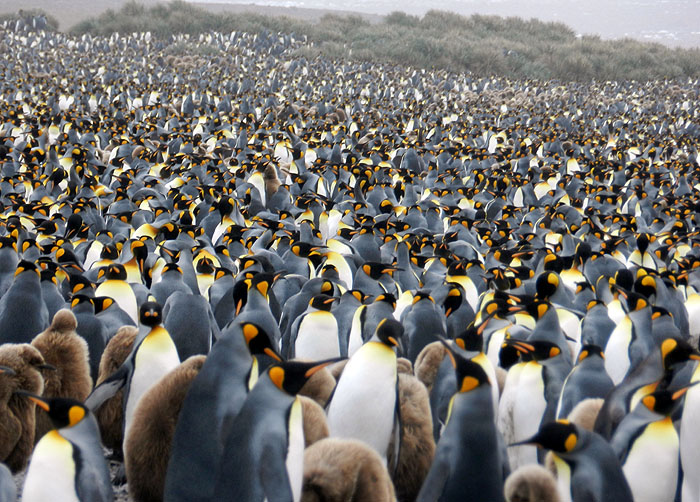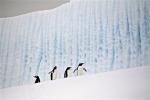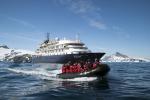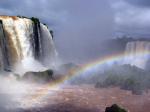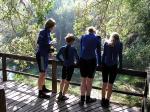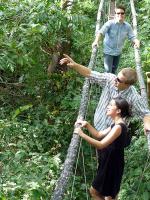'Seven Worlds, One Planet' hosted by Sir David Attenborough first aired Sunday 27 October 2019 at 6.15pm on BBC1.
Each episode of the seven-part series focusses on a different continent and launched with Antarctica.
The series was four years in the making and set out to showcase the true character of each continent, concentrating on the iconic landscapes and spectacular wildlife of each. There is also a key environmental message at the heart of every episode.
Antarctica - episode 1
The series begins with a breathtaking look at Antarctica – the least populated place on earth, which humans saw for the first time only 200 years ago - in fact, Irish-born navigator Edward Bransfield is credited with making the first confirmed sighting of the Antarctic coastline (Trinity Peninsula) on 30 January 1820.
This episode features amazing footage of gentoo penguins, leopard seals, elephant seals, whales and albatross. There is also a positive report of how some species of whale are finally making a comeback in the region after the long era of slaughter ended - the southern right whale had dwindled to just 35 breeding females at one point, but now there are more than 1,000.
The only way to reach the Antarctic peninsula is by taking an expedition cruise, either from mainland South America, or flying to Stanley or King George Island.
November is the start of the season and sees the courting period for penguins and sea birds, with whole colonies in spectacular displays of courtship rituals. December and January are witness to wildlife in full swing, with the first penguin chicks emerging, fur seals and whale sightings on the increase as the receding ice opens new water channels. February and March is the best time for whale sightings and penguin chicks begin to fledge their nests.
www.lastfrontiers.com/antarctica
Click here to watch this episode on BBC iPlayer www.bbc.co.uk/iplayer/episode/m0009tt8/seven-worlds-one-planet-series-1-1-antarctica
South America - episode 3
The South America episode aired on 10 November 2019.
Our friends at the Tambopata Research Centre (TRC) in the Peruvian Amazon helped with the filming. Near the lodge is one of the largest parrot and macaw clay licks in South America. Many of us have been lucky enough to stay at the lodge and witness firsthand the cacophony of the clay lick at dawn, and Sue is off there in April 2020 with a group of Oxbridge alumni.
The episode also features a puma hunting guanaco, which was filmed in and around Torres del Paine, Chile. Since the ban on hunting in 1972, the puma population has been growing steadily and there are now 50-100 pumas in the national park and surrounding area. Puma tourism has helped change attitudes, with many hunters now turned trackers.
From October to May, the puma roam far across the mountains in search of guanacos, but in the winter the guanacos congregate on lower ground to graze, making the pumas easier to find. There are now good chances of spotting a puma year round and some lodges offer puma tracking experiences. Most lodges then close for the winter, but the Explora hotel does remain open.
The South America episode features swifts that live behind a huge waterfall and have to fledge through the torrent of water in order to reach the world beyond. This was filmed at Iguassu Falls, a magnificent and truly breathtaking sight where the river Iguaçu emerges from dense forest to then plunge over a series of cliffs to create multiple falls that are higher than Niagara and wider than the Victoria Falls.
www.lastfrontiers.com/brazil/regions/iguassu-falls www.lastfrontiers.com/argentina/regions/iguassu-falls
The crystal clear rivers of Bonito in southern Brazil are also featured, where the Piraputanga fish follow the capuchin monkeys feeding overhead, ready to catch any ripe fruit dropped into the water. Visitors to the area can go floating along the river equipped with a mask and snorkel.
A visit to Bonito is best combined with a visit to one of the lodges in the southern Pantanal.
In Colombia we were shown the endangered cotton-top tamarins. These are amongst the most endangered primates in the world due to the destruction of their natural habitat and also the fact that thousands were taken for experiments in the US in the 1970's. These small monkeys are distinctive due to the characteristic bouffant of white hair on their head and it is possible to see them in the wild in the dry forest of El Ceibal regional park; a day excursion from Cartagena.
www.lastfrontiers.com/colombia/regions/caribbean
Click here to watch this episode on BBC iPlayer www.bbc.co.uk/iplayer/episode/m000b9f8/seven-worlds-one-planet-series-1-3-south-america
To experience these dramatic landscapes and spectacular wildlife events first-hand, please get in touch.
